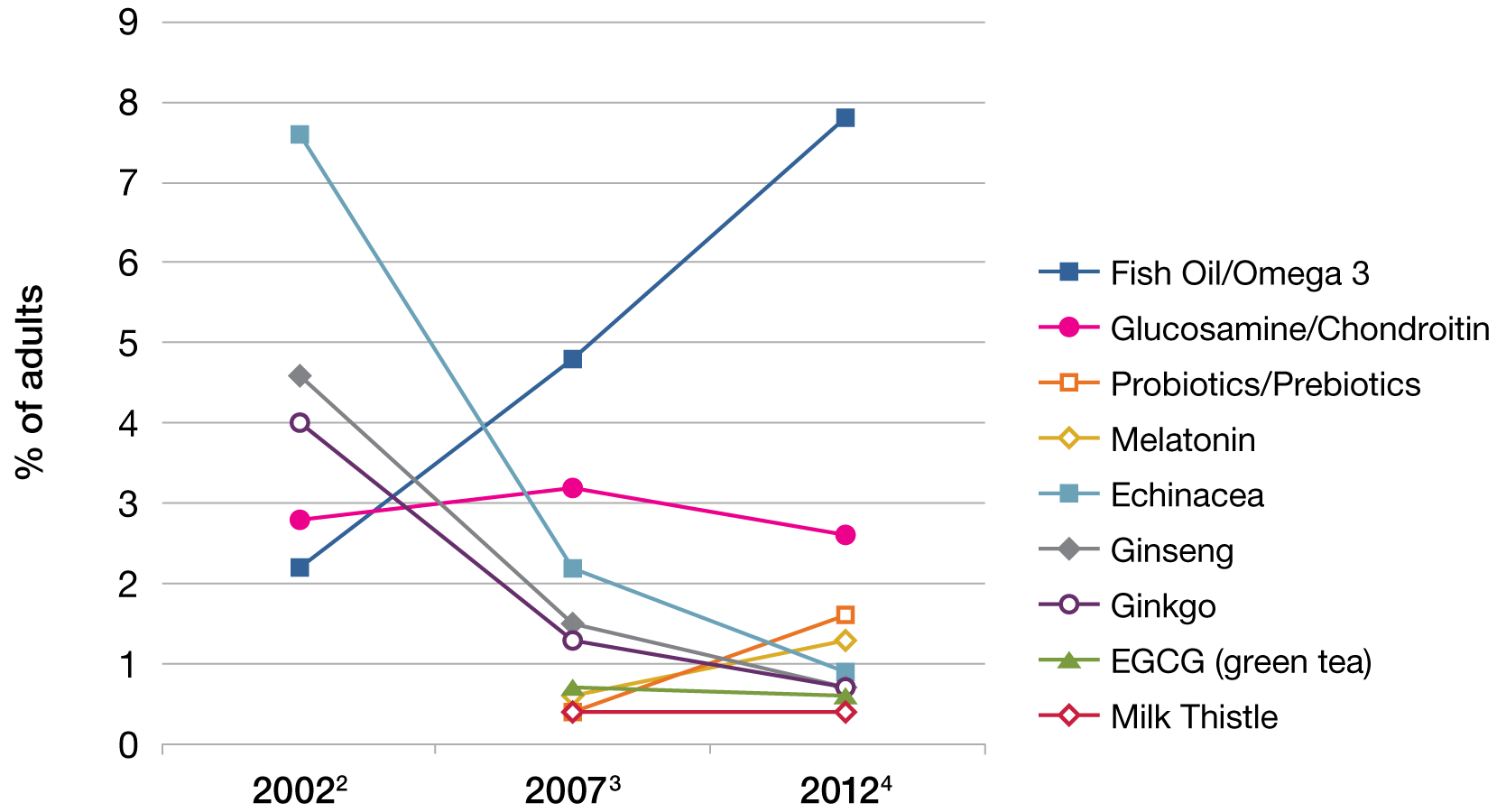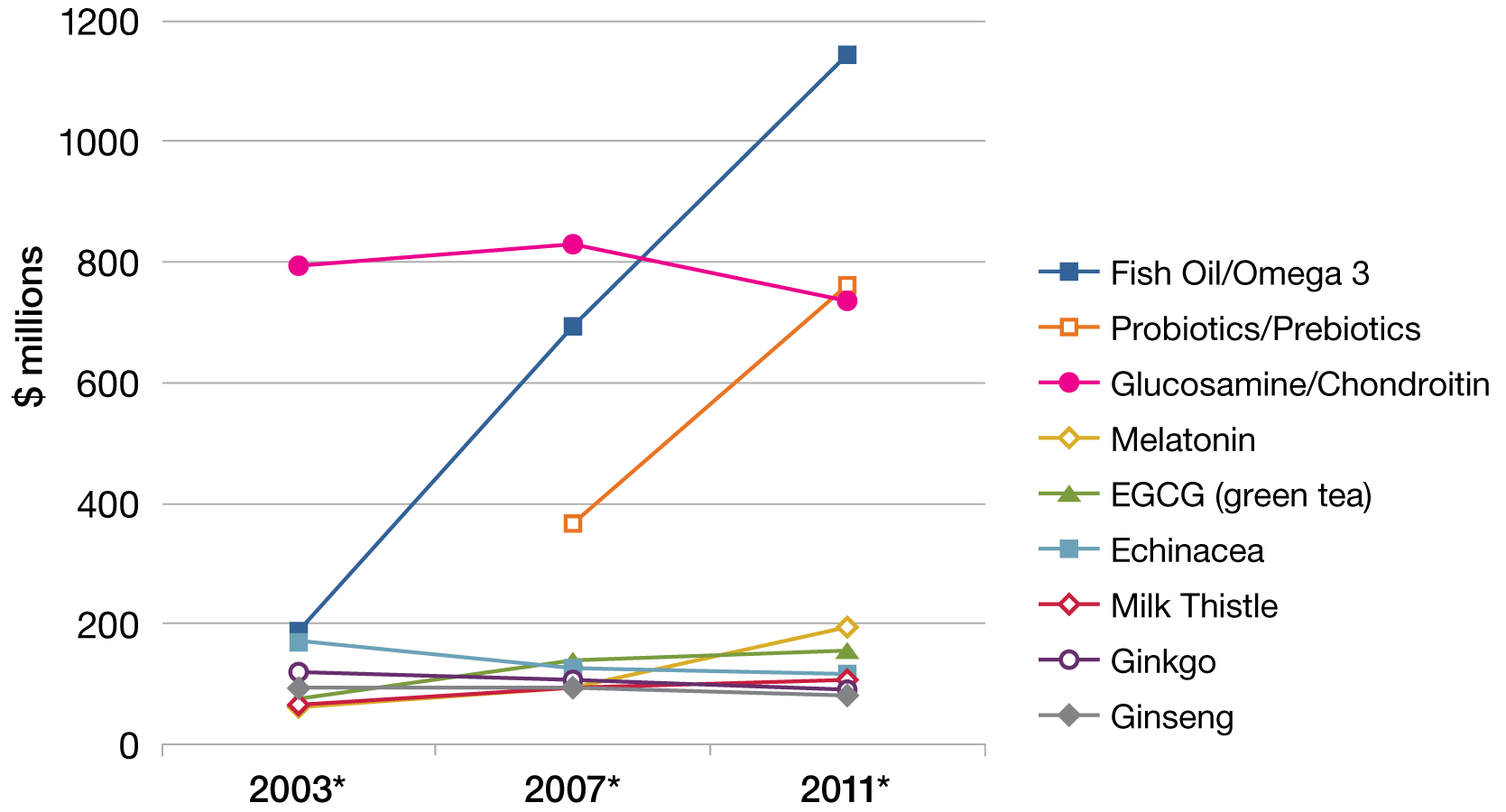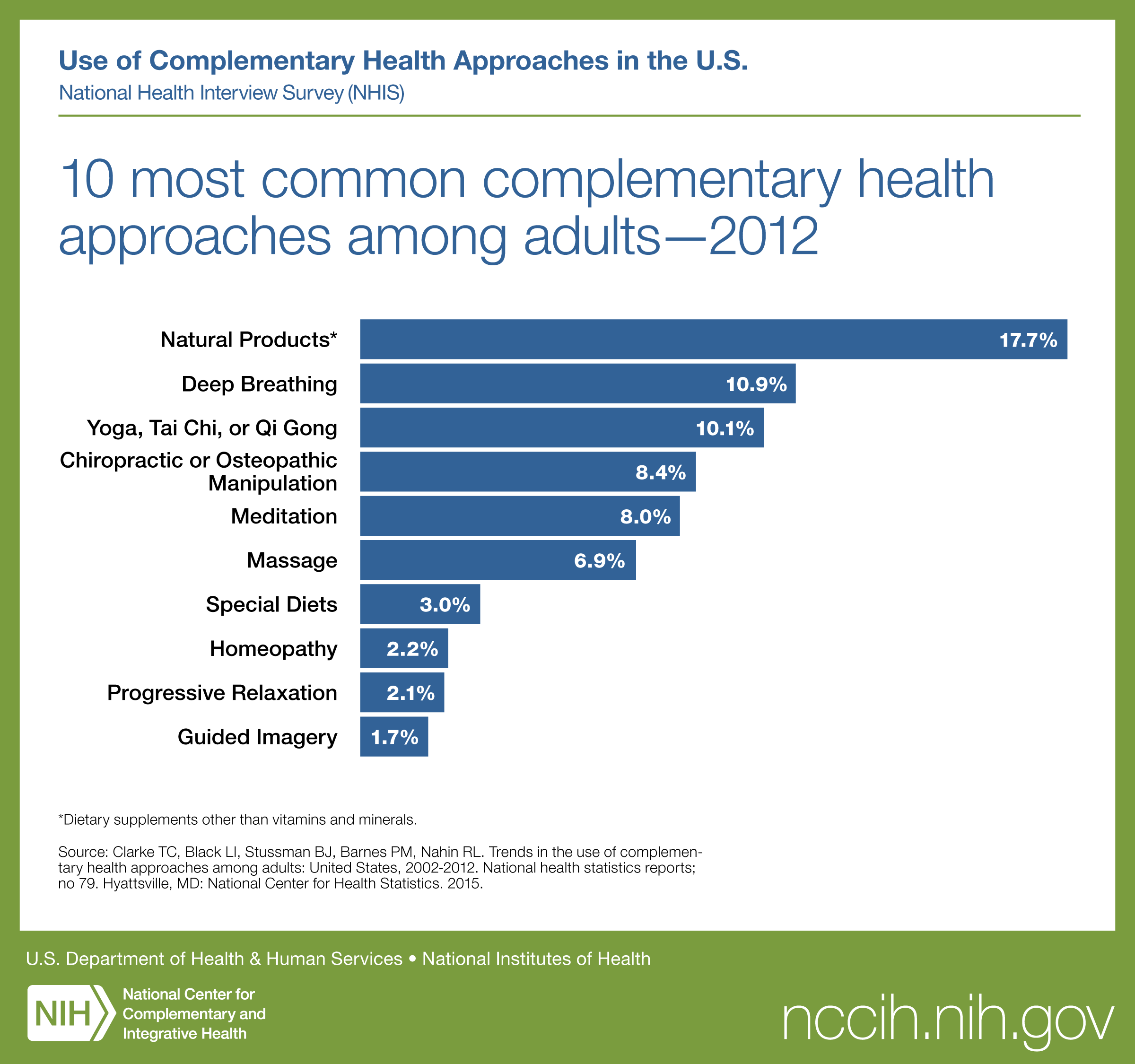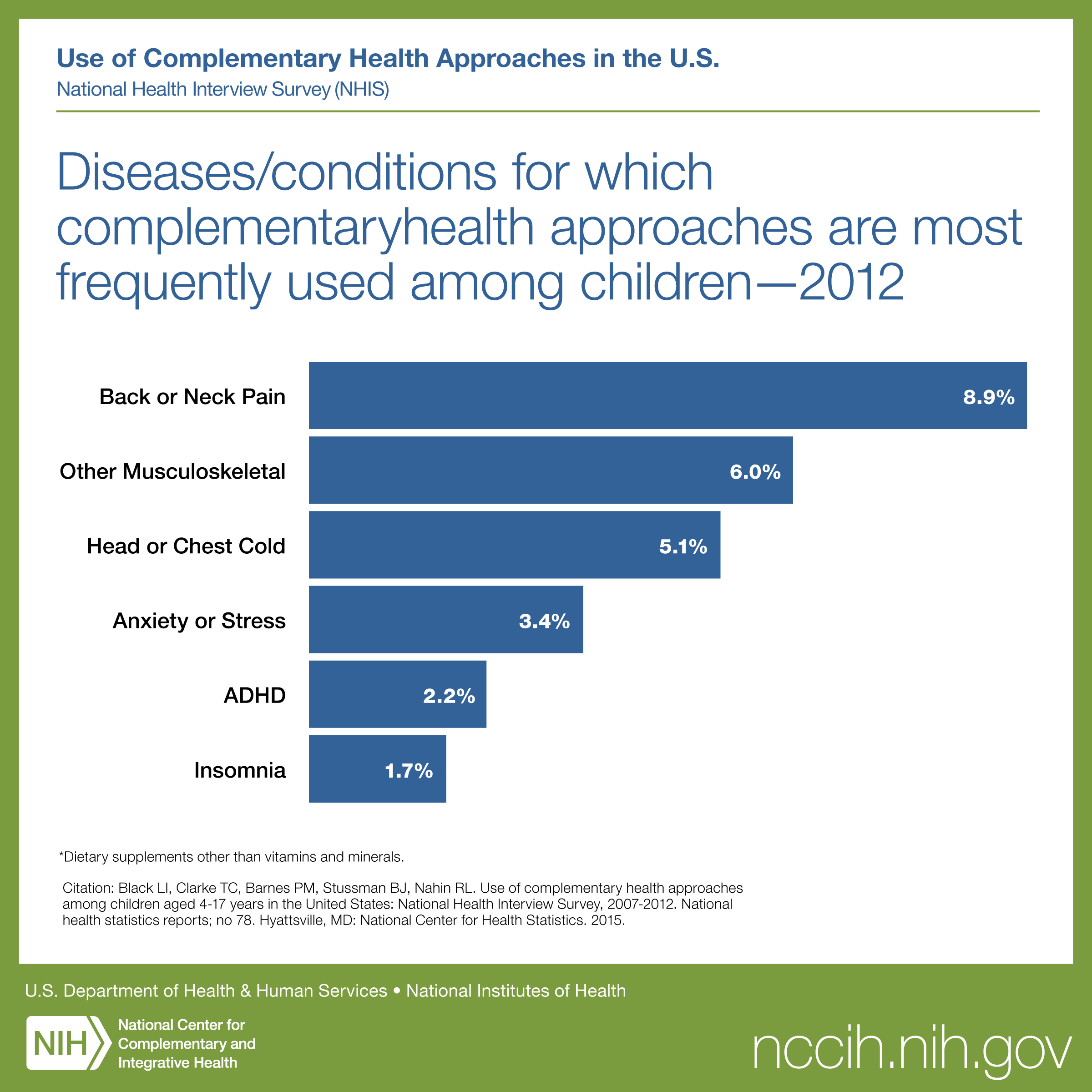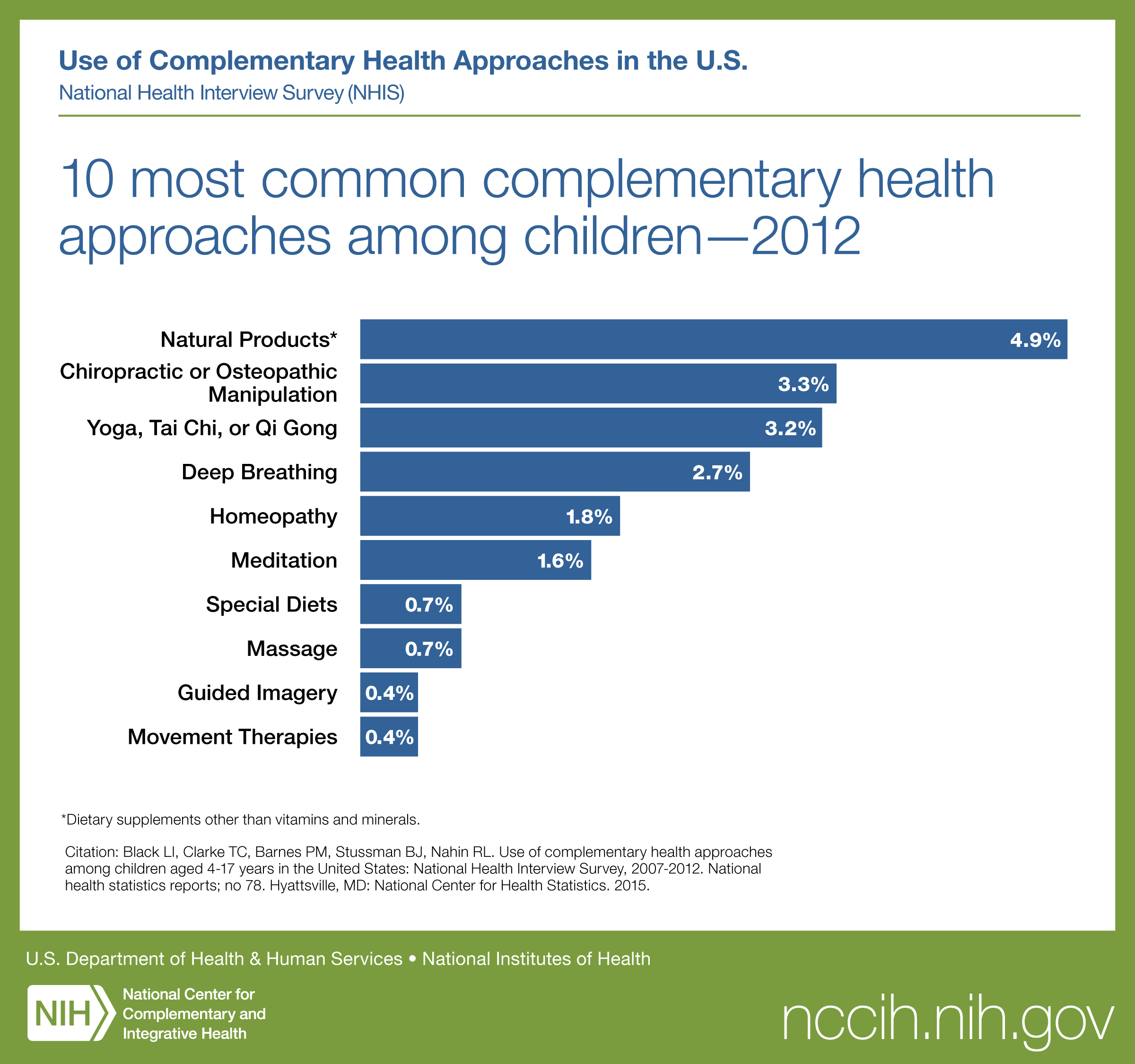Trends in the Use of Complementary Health Approaches in the United States: 2002–2012
See Press Releases:
- Nationwide survey reveals widespread use of mind and body practices
- Nationwide study reports shifts in Americans’ use of natural products
Read Summaries:
Trends in Mind and Body Practices
13-Year Trends for Complementary Approaches where Questions are Very Similar Across Years
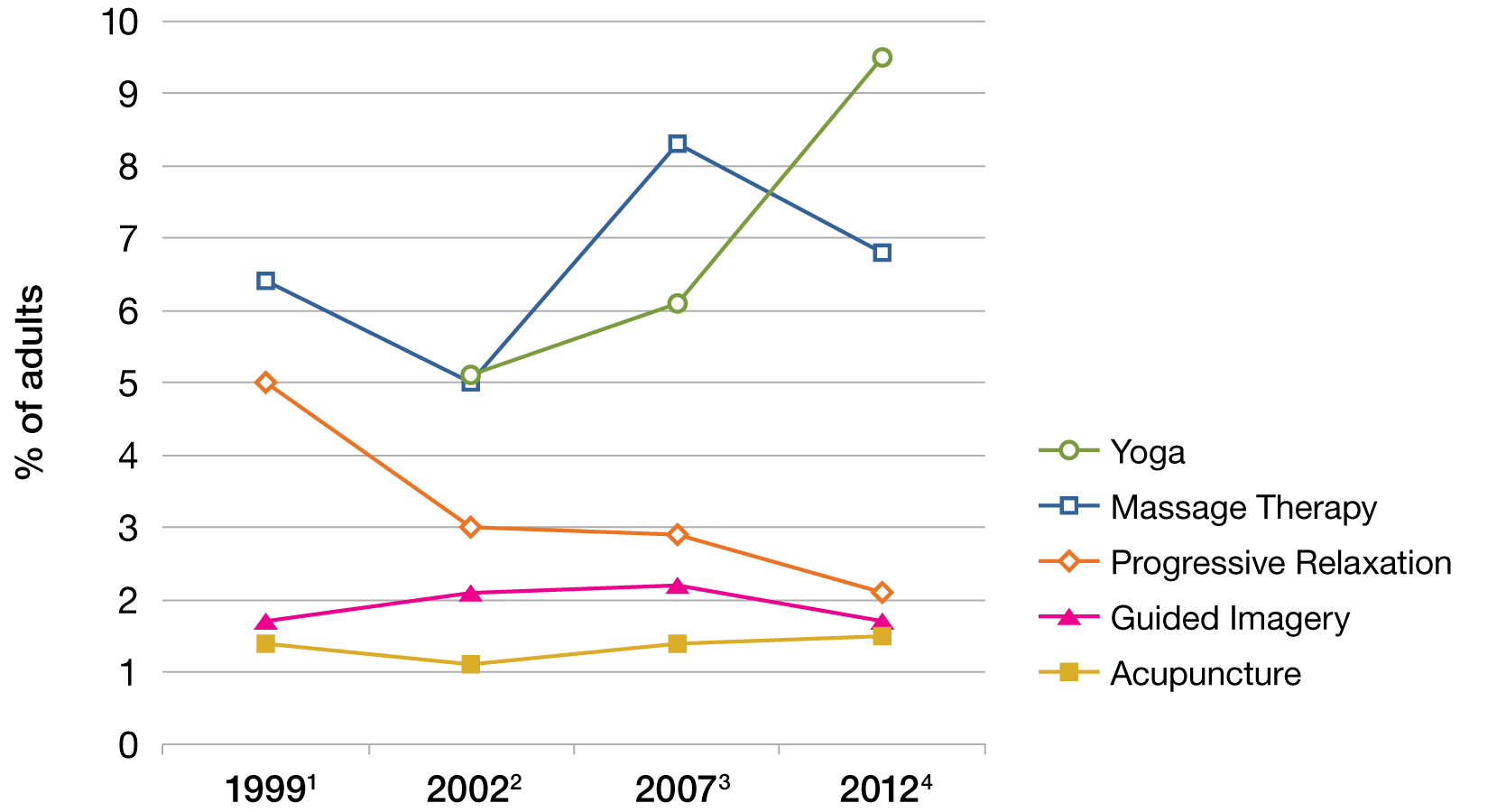
Trends in Natural Products
Note to researchers: NHIS data are available for secondary analyses. Visit https://www.cdc.gov/nchs/nhis/ for further information.
Citations of the Reports:
- Clarke TC, Black LI, Stussman BJ, Barnes PM, Nahin RL. Trends in the use of complementary health approaches among adults: United States, 2002–2012. National health statistics reports; no 79. Hyattsville, MD: National Center for Health Statistics. 2015.
- Black LI, Clarke TC, Barnes PM, Stussman BJ, Nahin RL. Use of complementary health approaches among children aged 4-17 years in the United States: National Health Interview Survey, 2007-2012. National health statistics reports; no 78. Hyattsville, MD: National Center for Health Statistics. 2015.
